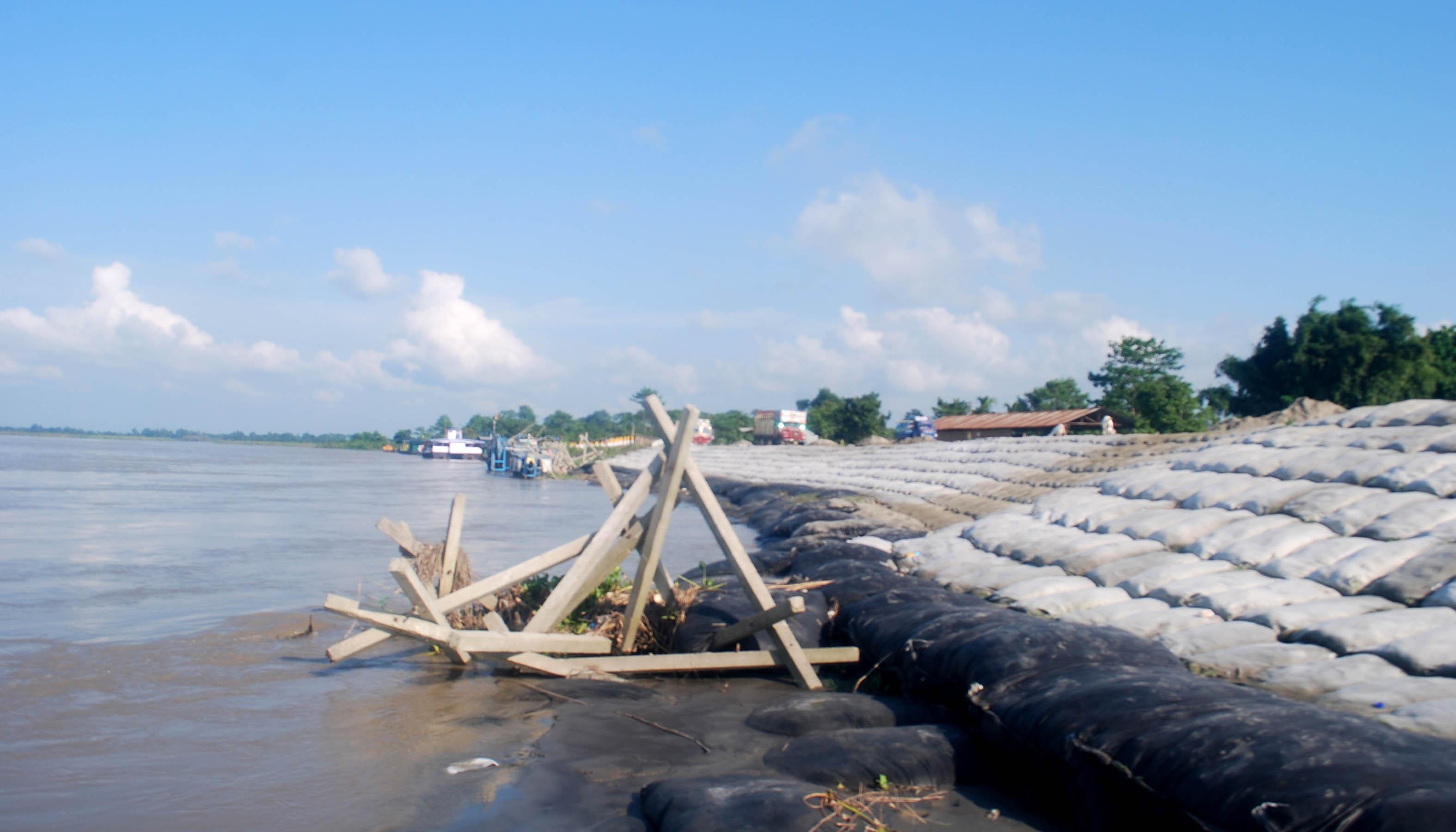A massive cloudburst in Tibet has forced authorities in China to release more water down the Brahmaputra than at any time over the last 50 years. China has warned India about the release in the transboundary river – known as Yarlung Zangbo in China – and two Indian states are on high alert for floods.
The discharge was measured at 9,020 cubic metres per second (cumec) at 8 a.m. on August 29 and led to huge waves on the Siang in Arunachal Pradesh, the state in northeastern India through which the river enters India. Eyewitness reports estimated the wave heights at up to four metres, in a river that usually has hardly any waves at all.
In contrast, the discharge on August 14 had been measured at 8,070 cumec, according to India’s Central Water Commission. The Siang joins two other rivers downstream to form the Brahmaputra.
Tamiyo Tatak, the Deputy Commissioner of East Siang district in Arunachal Pradesh, sent out a warning the same day, asking people “to refrain themselves from venturing into Siang river for fishing, swimming etc. to avoid any eventualities. Further, people living in low lying areas (both right bank and left bank) viz. Jarku, Paglek, SS Mission, Jarkong, Banskota, Berung, Sigar, Borguli, Seram, Kongkul, Namsing, MER nearby Siang river are advised to remain alert but not to panic.”
Eyewitness reports on the morning of August 31 said the waves had gone down, but the Siang was still flowing at a far higher level than usual, even during the height of the monsoon.
Despite the official warning, 30 people were reported stranded on an island in the Siang in the Sille-Oyan area on the morning of August 31. The Arunachal Pradesh government has requested the Indian Air Force to send helicopters that can winch these people to safety, since the island is too small for a helicopter to land.
Assam on high alert too
Further downstream, the Assam State Disaster Management Authority (ASDMA) warned the Dibrugarh district administration in the eastern part of the state to be on high alert. Laya Maduri, the Deputy Commissioner of Dibrugarh district, sent out an order on August 30.
It read, “Flood warning has been received from ASDMA that as a result of release of excess water by Chinese Government, there may be unprecedented rise in the water level in the river Brahmaputra thereby causing severe flood. Therefore, officers of district are asked not to leave Headquarter…”
Reports on the morning of August 31 said the Brahmaputra was flowing high in Dibrugarh, but had not crossed the danger mark yet.
Transboundary cooperation
Authorities in India were able to prepare for this 50-year high in Brahmaputra water discharge well in advance, due to the warning provided by the Chinese authorities. China resumed providing water flow data to India this May under a Memorandum of Understanding (MoU) between the two countries. The data supply had been stopped in 2017. Observers in India blamed that on a face-off between the Chinese and Indian armies along their 3,500-km Himalayan border, though the Chinese authorities had said they were upgrading their water level measuring stations.
Since 2009, thethirdpole.net has consistently advocated for closer cooperation between China and India over the transboundary river Brahmaputra, which later flows into Bangladesh to join the Ganga. The scope of the MoU has been expanded over the years, but far more is possible.
Noted Brahmaputra expert Partha Jyoti Das told thethirdpole.net, “It is good that China is now regularly providing hydrological data through the monsoon period, but a lot more can be done. We need topographical data as well. That will tell us where landslides are likely to occur after heavy rain, and then we can foresee the possibilities of a flood even earlier.”
In the absence of any water flow data from the Chinese government in 2017, there had been panic in Arunachal Pradesh and Assam in November that year, when the sediment load in the river went up all of a sudden and the water almost ran black for a number of days. Independent experts from India had later said the high sediment load was due to an earthquake in Tibet, which had led to a landslide blocking the water flow in the river for some time, before it all came roaring down together.
Anamika Barua, who teaches at Indian Institute of Technology, Guwahati, has explored possibilities of regular flow of information between China and India on the Brahmaputra, through civil society channels as well as the governments. The panic in 2017 may have been avoided if some of her recommendations had been acted upon by academics in China.
Das was critical of the central and Assam governments in India for not sharing any information with the people on last November’s episode. “Have they done any studies on why this happened? If they have, why don’t they share their results in public? What the government says is important. Without that, there can be a lot of unnecessary panic.”
By Joydeep Gupta, First Published in The Third Pole
- 12923 reads









Add new comment